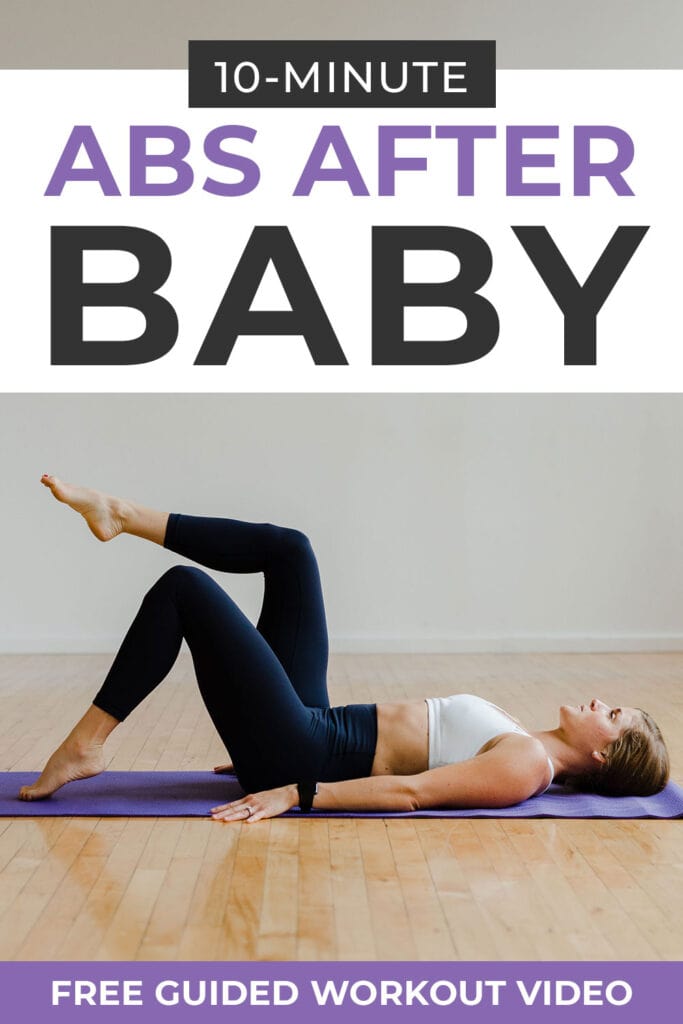
Abdominal Exercise Post-Pregnancy: A Comprehensive Guide
Pregnancy is a transformative experience that brings immense joy and fulfillment, but it can also leave lasting physical changes, including weakened abdominal muscles. Restoring core strength after childbirth is crucial for overall well-being, as it supports proper posture, reduces back pain, and improves pelvic floor function. Abdominal exercises play a vital role in this recovery process, but it’s essential to approach them safely and gradually.
Understanding Postpartum Abdominal Changes
During pregnancy, the uterus expands significantly, causing the abdominal muscles to stretch and separate. This condition, known as diastasis recti, is common and usually resolves within a few months after delivery. However, for some women, the separation may persist, leading to a weakened core and potential back pain.
Other factors that can contribute to postpartum abdominal weakness include:
- Hormonal changes that relax ligaments and muscles
- Increased weight gain during pregnancy
- C-section delivery
When to Start Abdominal Exercises
The timing of starting abdominal exercises after pregnancy varies depending on the individual’s recovery progress. It’s generally recommended to wait until:
- The bleeding has stopped
- The uterus has returned to its pre-pregnancy size
- There is no pain or discomfort in the abdominal area
For most women, this occurs around 6-8 weeks postpartum. However, it’s crucial to consult with a healthcare professional before starting any exercise program, especially if there were any complications during delivery.
Safe and Effective Abdominal Exercises
Once cleared by a healthcare professional, women can gradually incorporate abdominal exercises into their routine. Here are some safe and effective options:
1. Diaphragmatic Breathing
- Lie on your back with your knees bent and feet flat on the floor.
- Place one hand on your chest and the other on your abdomen.
- Inhale slowly through your nose, allowing your abdomen to expand.
- Exhale slowly through your mouth, contracting your abdominal muscles.
2. Pelvic Tilts
- Lie on your back with your knees bent and feet flat on the floor.
- Tilt your pelvis backward, flattening your lower back against the floor.
- Hold for a few seconds and then release.
3. Bird Dog
- Start on your hands and knees with your hands directly under your shoulders and your knees under your hips.
- Extend your right arm forward and your left leg backward simultaneously.
- Hold for a few seconds and then return to the starting position.
- Repeat on the other side.
4. Plank
- Start on your forearms and toes, with your elbows directly under your shoulders.
- Keep your body in a straight line from head to heels.
- Hold for as long as possible, maintaining proper form.
5. Side Plank
- Lie on your side with your elbow directly under your shoulder.
- Lift your hips off the ground, forming a straight line from head to heels.
- Hold for as long as possible and then switch sides.
Progression and Modifications
As strength improves, women can gradually increase the intensity and duration of their abdominal exercises. It’s important to listen to their bodies and avoid any exercises that cause pain or discomfort.
Modifications can be made to accommodate individual needs:
- For diastasis recti, focus on exercises that do not increase abdominal pressure, such as pelvic tilts and diaphragmatic breathing.
- For those with back pain, avoid exercises that involve excessive spinal flexion, such as crunches.
- For beginners, start with shorter hold times and gradually increase the duration as strength improves.
Additional Tips
- Warm up before each workout with light cardio and stretching.
- Cool down after each workout with static stretching.
- Use proper form to prevent injury.
- Avoid excessive abdominal exercises, as this can overwork the muscles and lead to pain.
- Stay hydrated by drinking plenty of water.
- Listen to your body and rest when needed.
Conclusion
Abdominal exercises are an essential part of postpartum recovery, helping to restore core strength, improve posture, and reduce back pain. By following the guidelines outlined in this article, women can safely and effectively incorporate these exercises into their routine and reap the benefits of a strong and healthy core. It’s crucial to consult with a healthcare professional before starting any exercise program and to listen to your body throughout the recovery process. With patience and perseverance, women can regain their pre-pregnancy abdominal strength and enjoy the full benefits of motherhood.